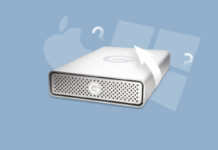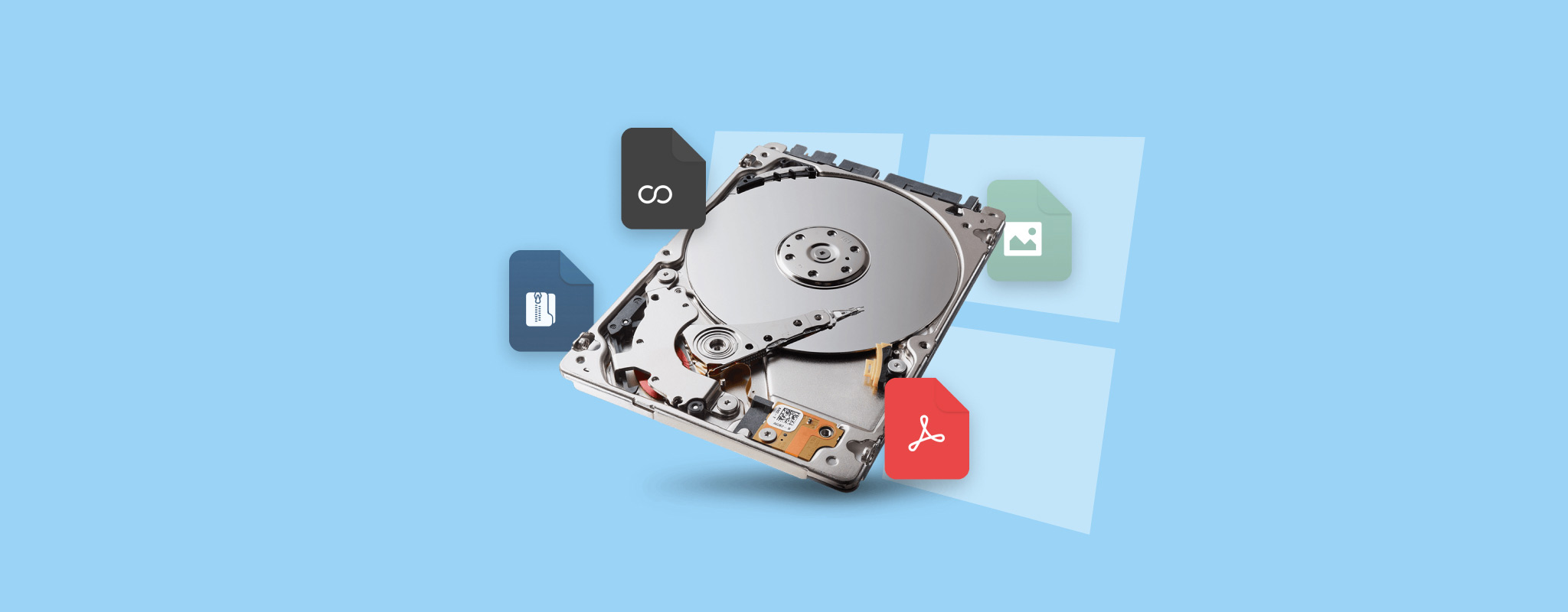 Your internal hard drive is an integral part of your computer. If it suddenly stops working, your ability to access and open the files on it is gone too. Therefore, if there’s data you need to recover, you must do it with haste.
Your internal hard drive is an integral part of your computer. If it suddenly stops working, your ability to access and open the files on it is gone too. Therefore, if there’s data you need to recover, you must do it with haste.
There are numerous ways to recover your data, from fixing the hard drive and moving the data across yourself to specialized software that recovers it for you. Read on to find out how to recover data from internal hard drives.
Common Data Loss Problems With Internal Hard Drives
Getting data from a hard drive can be easy, but you should first understand the problems (if any) that your hard drive is afflicted with to ensure that none of the data gets lost during the process due to error. Here are some of the most common data loss problems that internal hard drives face:
| Problem | Description |
| 📂 Improper partition formatting | Making a mistake while partitioning a hard drive can lead to a large bunch of your data becoming lost and inaccessible. |
| ❌ Bad sectors | Bad sectors occur naturally as your hard drive ages, but when they appear in large numbers, it can signal that your hard drive is about to fail. |
| 😧 Accidental data deletion | Mistakes happen all the time. While the Recycle Bin can restore smaller files quickly, larger ones often skip it entirely. |
| 🔌 Interrupted data copying | Interruptions to any data-write process, like sudden power loss or unexpected shutdowns, will leave the data in a corrupted state. Severe cases can even result in the corruption of the entire file system. |
| 💥 Mechanical issues | Physical issues, like wear over time and overheating, can lead to the gradual degradation of your drive. |
The solutions we present to recover data from the internal hard drive will cover a range of data loss situations to ensure one works for you.
How to Recover Data From Internal Hard Drive
Your method of recovery will depend on the status of your hard drive. We’ve included recovery methods for each level of data loss below, which can also be used for SSD data recovery.
First, we’ll show you how to recover any lost or deleted data. Second, we look at recovery from computers that have damaged Windows system files that refuse to boot correctly. Third, we discuss your best option if your hard drive has faced severe damage and you’re unable to fix it yourself.
Scenario 1: Windows Is Booting Successfully
In cases where you have lost files that aren’t operating system-related, you can use data recovery software to scan for and recover them from the internal hard drive. For this method, we’ll be using Disk Drill, a data recovery tool that specializes in recovering data in situations like this.
The key here is that you should avoid installing or writing anything on the affected internal storage drive. Instead, install Disk Drill to a different internal or external drive.
- Download and install Disk Drill.
- Select the affected drive and click Search for lost data.
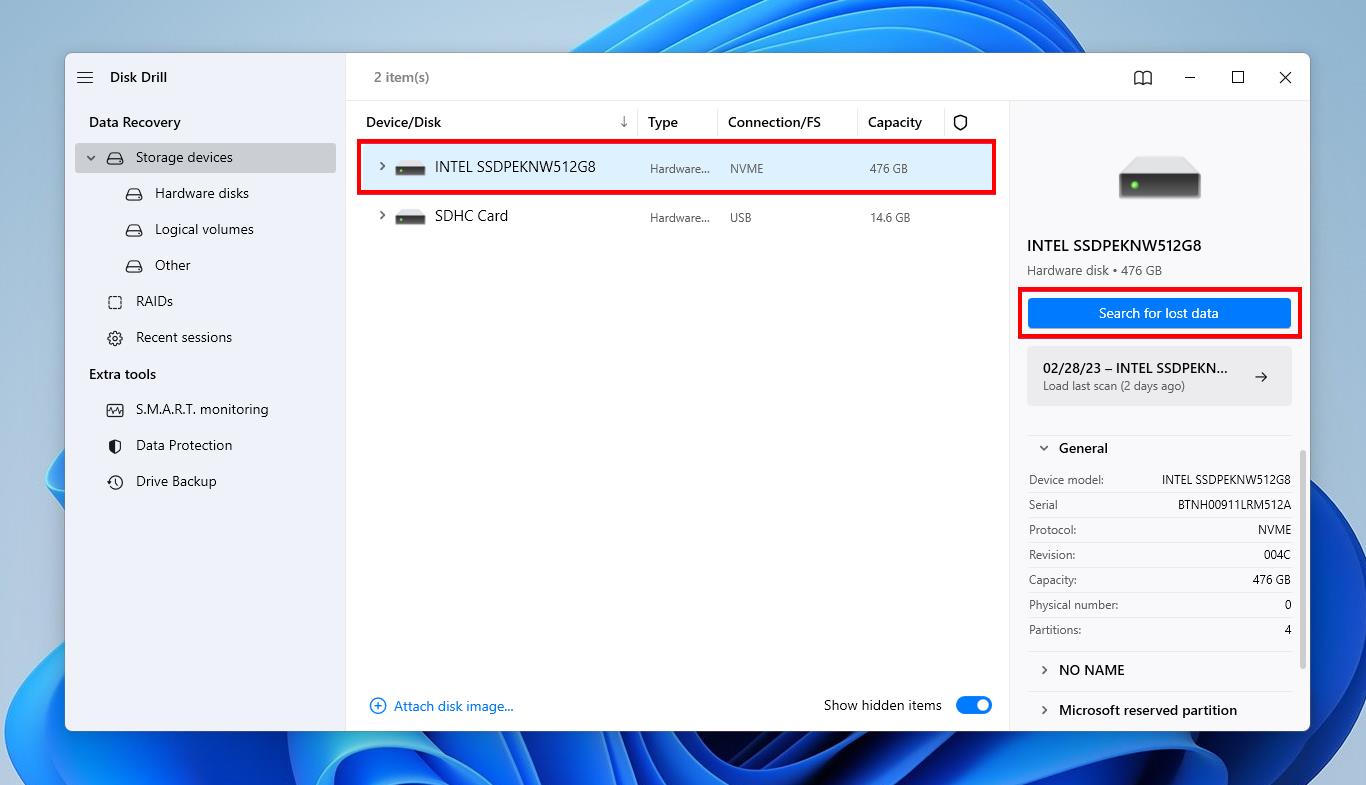
- Click Review found items once the scan is finished.
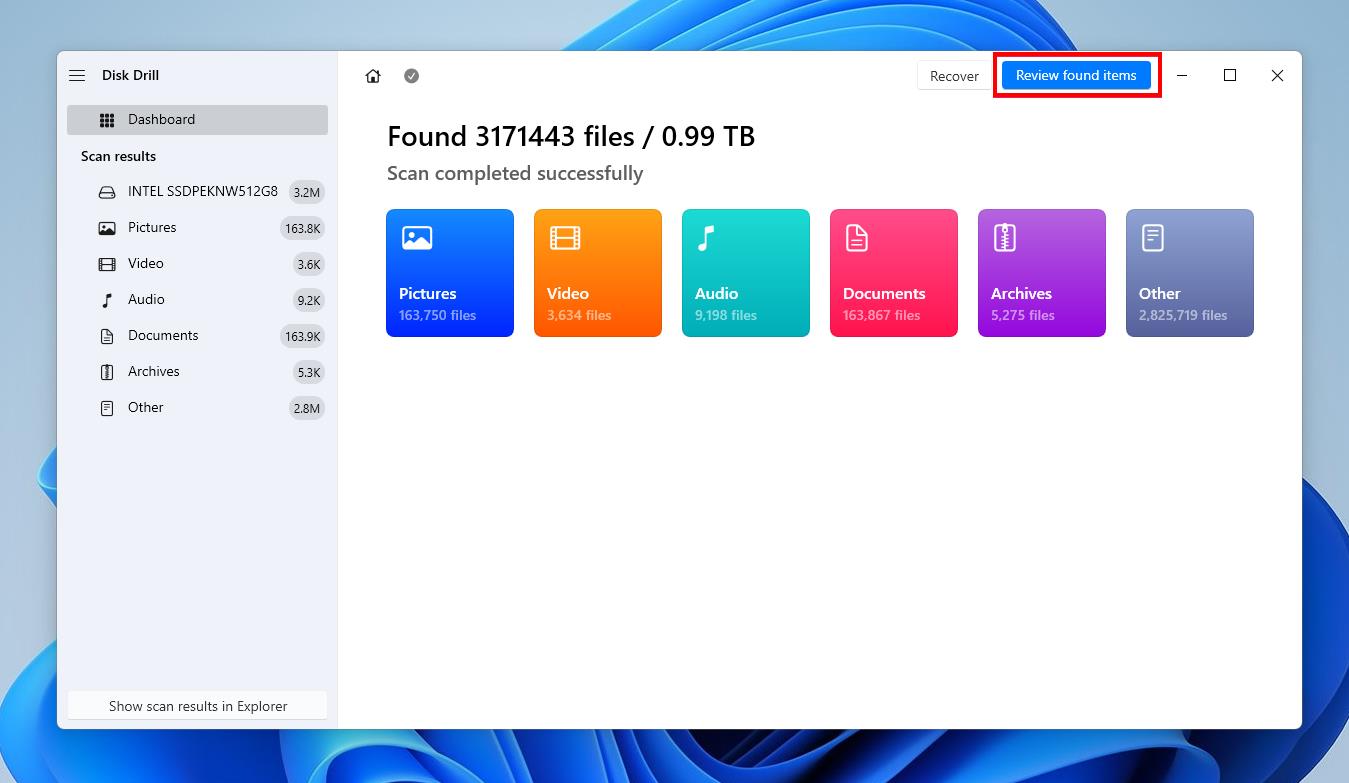
- Select the files you want to recover. Open the preview panel by double-clicking a file. You can also use the Recovery chances column to see which files have the best chance of recovery. When you’re ready, click Recover.
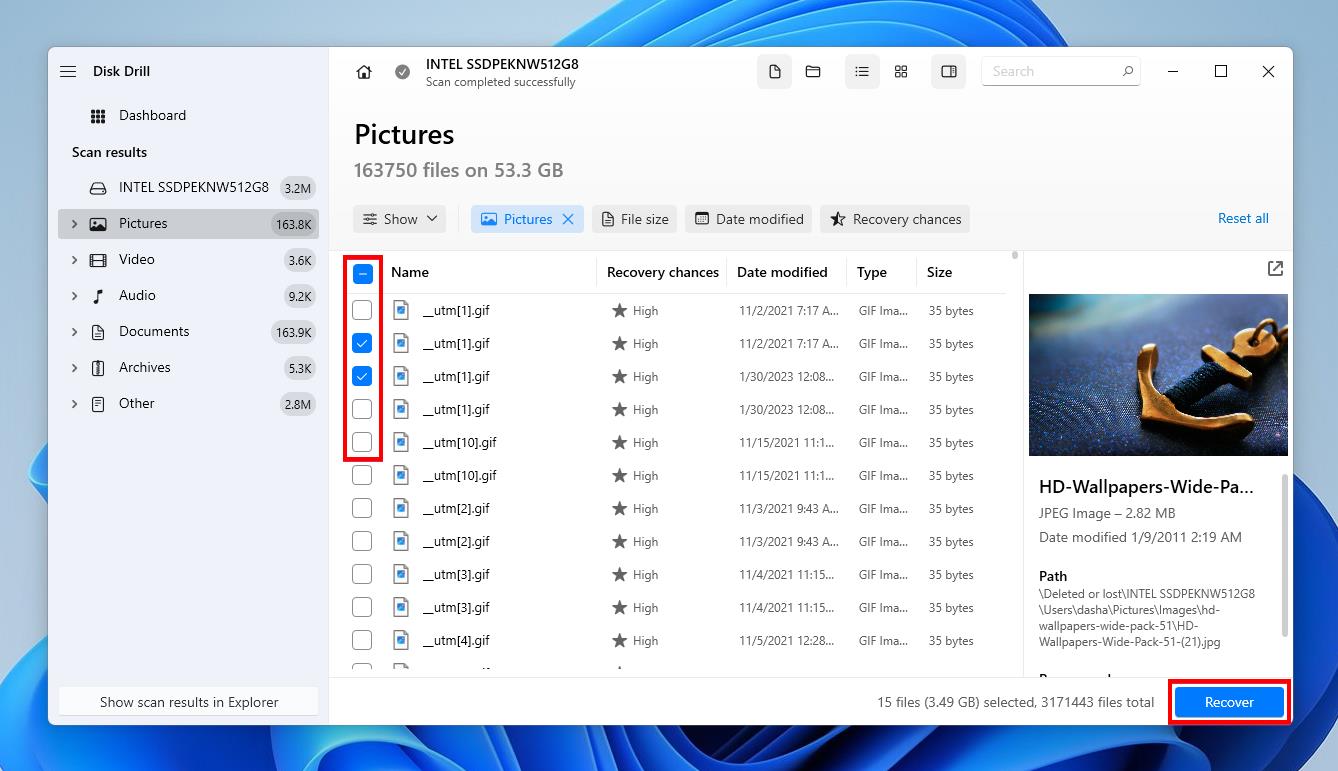
- Choose the desired output location. Make sure it’s not the same affected drive. Click Next.
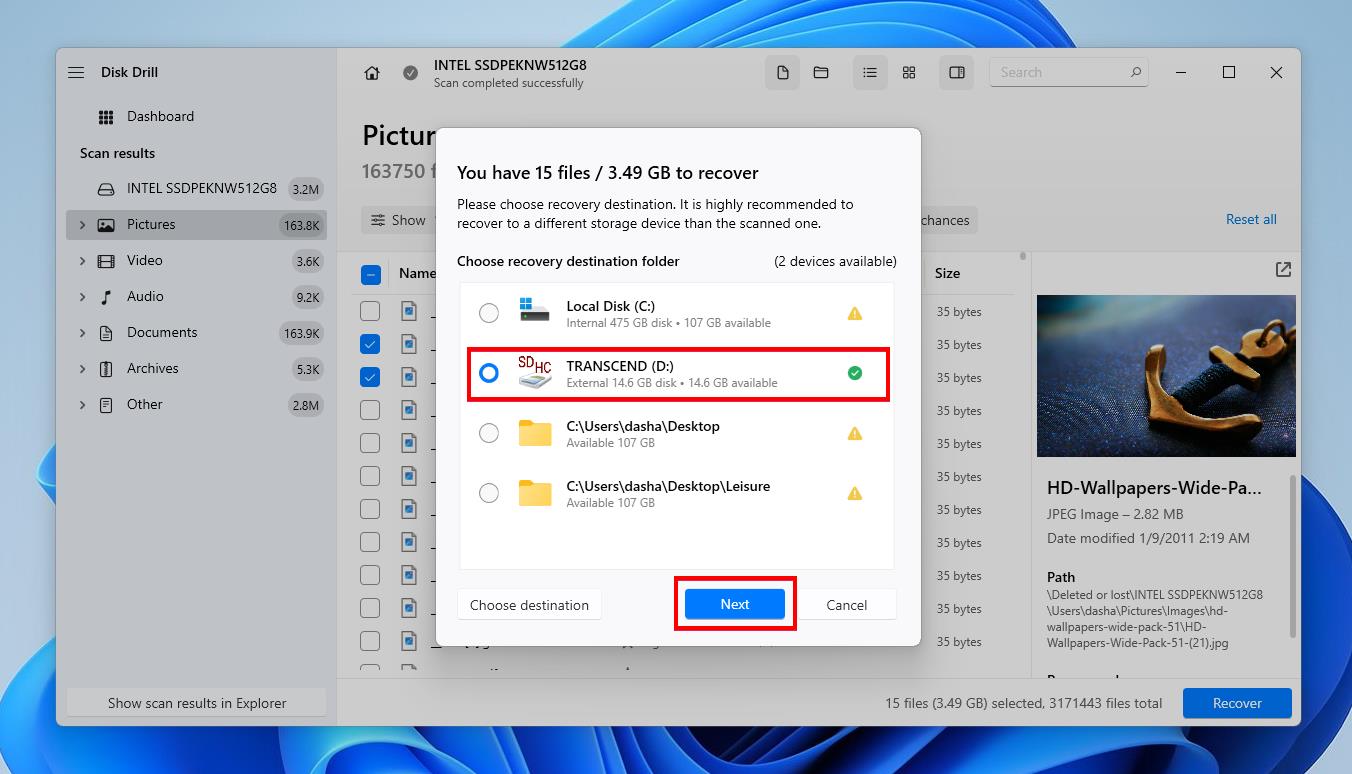
These same steps can be used in other recovery situations, like when you need to recover data from a laptop hard drive. Even so, getting data off an old hard drive isn’t always so straightforward. If Windows isn’t booting properly, take a look at the next solution.
Scenario 2: System Files Were Affected and Windows Doesn’t Boot
If your hard drive is operational but some of your Windows system files have been compromised, you will need to repair them before you can log in and recover your data. To do this, you must enter the Windows Recovery Environment (winRE) where you can perform troubleshooting.
To enter the winRE, you need to boot from a bootable USB or DVD containing Windows and choose to repair the computer. Alternatively, you can follow the steps to boot in directly from a black or blank screen. Once you’re there, you can attempt to fix the issue using the below options first:
- Startup Repair – A basic diagnostics tool that will scan your computer and attempt to automatically fix the most common problems.
- Startup Settings – This is where you can boot into Safe Mode. In Safe Mode, you can remove any suspicious software or files that you believe could be causing the issue.
- System Restore – If you have a system restore point, you can try restoring the computer to a previous point in time where it was working correctly.
- Uninstall Updates – New updates can sometimes do more harm than good. If you know that the errors started happening after updating, try uninstalling them with this option.
If none of the above options worked for you, we’ll show you two more methods you can try.
Repair System Files Using Command Prompt
Command Prompt allows you to run further troubleshooting tools without the need to enter Windows. The tools we’ll be using are SFC and DISM. SFC (System File Checker) will scan your Windows installation and restore the missing or damaged files. DISM (Deployment Image Servicing and Management) is used to get the files needed to repair any corrupted or damaged ones. Bear in mind that it does require an internet connection, as it gets these files from Windows Update.
- Click Command Prompt or boot into Safe Mode with Command Prompt.
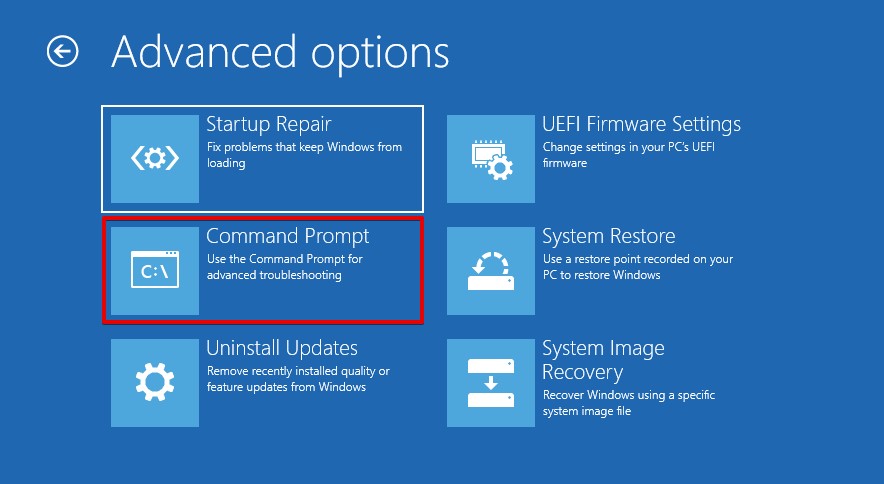
- Type sfc /scannow. Press Enter.
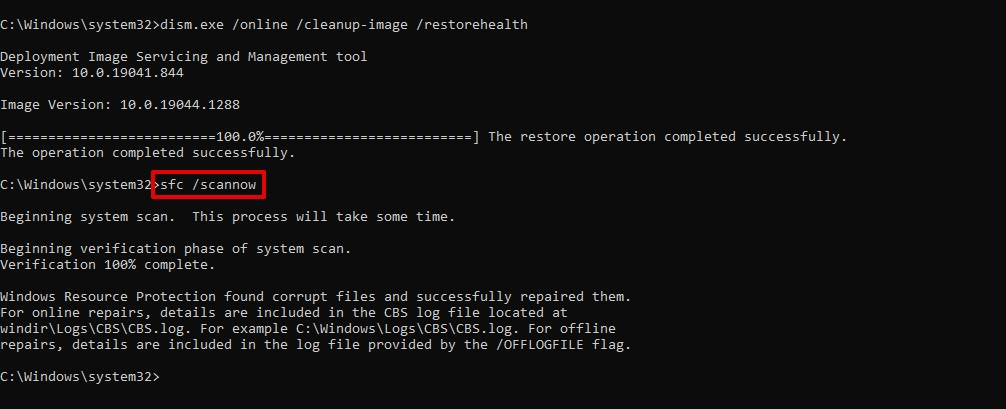
- Type DISM.exe /Online /Cleanup-image /Restorehealth. Press Enter.
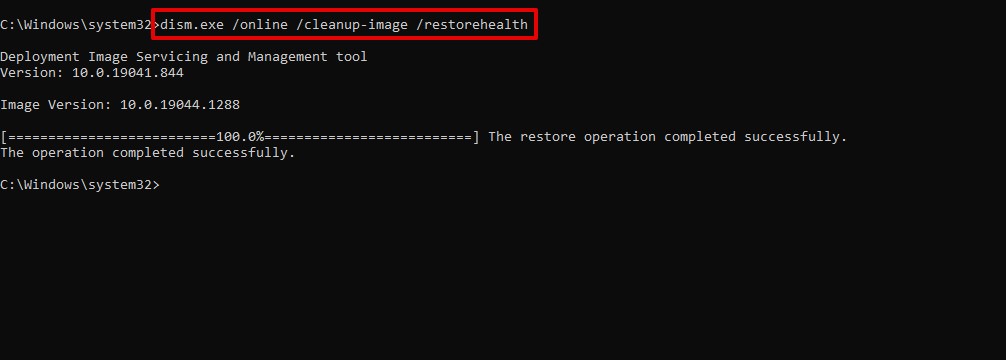
Back-Up Hard Drive and Reinstall Windows
Sometimes you just need to do a fresh new install of Windows in order to get back up and running. While it can be a strenuous process, in some cases it may be the only viable option available.
- Remove the internal hard drive from your computer.
- Connect it to another computer and make a full backup of the drive. You can accomplish this with Disk Drill’s byte-to-byte backup feature.
- Put it back into your computer and reinstall Windows.
Scenario 3: Disk Is Damaged or Corrupted
Data recovery software and troubleshooting efforts can only do so much to recover data from a crashed internal hard disk. In cases where the internal drive has been physically damaged due to prolonged use while overheating or general wear and tear, your safest option is to use a data recovery service.
A data recovery service is typically the more expensive option, but for good reason as it has the highest chance of safely recovering your data. Data recovery specialists utilize industry-grade hardware and techniques to recover data from the hard disks of laptops and desktop computers, returning it to you on a healthy and working storage device.
How to Prevent Data Loss From Internal Hard Drive
Indicators like a freezing hard drive can be early signs of something more worrying. To save yourself from potentially hours of data recovery and troubleshooting, take a look at these tips to help prevent data loss from occuring:
- 💽 Back up your data – Without a doubt, backing up your data is the best way to protect it. Having a working copy allows you to easily restore lost or damaged files and avoid the sometimes strenuous data recovery process.
- 🩺 Monitor S.M.A.R.T. data – Your hard drive is capable of reporting its own health in the form of S.M.A.R.T. (Self-Monitoring, Analysis, and Reporting Technology) data. Monitoring this data allows you to act on early signs of degradation. Consider using the free S.M.A.R.T. monitoring tool included with Disk Drill.
- ⚡ Shut down safely – Interrupting hard drive operations, especially ones that involve writing data to the disk, can end up corrupting your files or file system. Always take the time to shut your computer down properly.
By taking the time to do the above, you’re potentially prolonging the lifespan of your hard drive and actively reducing your chances of a data loss event from occurring.
Conclusion
Internal hard drives can encounter problems at any moment. In such events, your first reaction should be to recover any data that you can. If you can boot into Windows, recover your data using a data recovery program to a safe storage device. If you cannot boot into Windows, use the suite of troubleshooting tools available in the Windows Recovery Environment to repair the damage and safely back up your data.
If you cannot repair the damage or recover the data yourself, reach out to a data recovery service to have a team of professionals handle it for you. Once your data is back, make backups so you can easily restore the data if something like this were to happen again.


